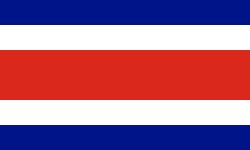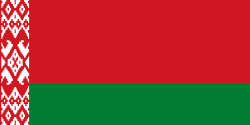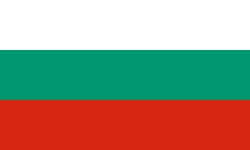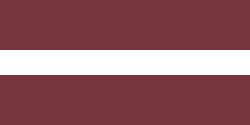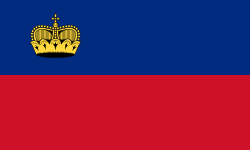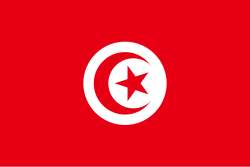Fed Cup 1997
| Fed Cup 1997 | |
|---|---|
| Datum | 1. března – 5. října 1997 |
| Ročník | 35. |
| Finálové utkání | |
| Vítěz | |
| Finalista | |
| Výsledek | 4–1 |
| Fed Cup | |
Fed Cup 1997, oficiálně se jménem sponzora Fed Cup by BNP Paribas 1997, představoval 35. ročník ženské tenisové týmové soutěže ve Fed Cupu, největší každoročně pořádané kolektivní soutěže v ženském sportu. Obhájkyněmi titulu byl družstvo Spojených států, které vypadlo ve čtvrtfinále. Historicky první titul v soutěži si připsala čtvrtá nasazená Francie po finálové výhře nad nizozemským týmem 4:1 na zápasy.
První kolo Světové skupiny se konalo mezi 1. a 2. březnem. Semifinále se odehrálo 12. a 13. července a finále pak od 4. do 5. října 1997.
Světová skupina
Účastníci
| Účastníci Světové skupiny | |||
|---|---|---|---|
Pavouk
| Čtvrtfinále 1.–2. března | Semifinále 12.–13. července | Finále 4.–5. října | |||||||||||||
| Haarlem, Nizozemsko (koberec, hala) | |||||||||||||||
| 1 | | 2 | |||||||||||||
| | 3 | Praha, Česko (antuka, venku) | |||||||||||||
| | 3 | ||||||||||||||
| Mannheim, Německo (tvrdý, hala) | | 2 | |||||||||||||
| | 3 | ||||||||||||||
| 3 | | 2 | 's-Hertogenbosch, Nizozemsko (koberec, hala) | ||||||||||||
| | 1 | ||||||||||||||
| Tokio, Japonsko (tvrdý, hala) | 4 | | 4 | ||||||||||||
| 4 | | 4 | |||||||||||||
| | 1 | Nice, Francie (antuka, venku) | |||||||||||||
| 4 | | 3 | |||||||||||||
| Sprimont, Belgie (tvrdý, hala) | | 2 | |||||||||||||
| | 5 | ||||||||||||||
| 2 | | 0 | |||||||||||||
Baráž Světové skupiny
Čtyři týmy, které prohrály v 1. kole Světové skupiny se v baráži o Světovou skupinu 1998 utkaly se čtyřmi vítěznými družstvy ze Světové skupiny II.
| Baráž Světové skupiny – 12. a 13. července | ||||
|---|---|---|---|---|
| Místo konání | povrch | domácí | výsledek | hosté |
| Hope Island, Austrálie | tvrdý, venku | 2–3 | ||
| Curych, Švýcarsko | koberec, hala | 5–0 | ||
| Frankfurt nad Mohanem, Německo | koberec, venku | 3–2 | ||
| Chestnut Hill, Spojené státy americké | tvrdý, venku | 5–0 | ||
Světová skupina II
Světová skupina II představovala druhou nejvyšší úroveň soutěže. Čtyři vítězné týmy postoupily do barážových utkání o účast ve Světové skupině 1998. Na poražené čekala baráž o setrvání v této úrovni soutěže v příštím ročníku.
| Světová skupina II – 1. a 2. března | ||||
|---|---|---|---|---|
| Místo konání | Povrch | Domácí | Výsledek | Hosté |
| Záhřeb, Chorvatsko | tvrdý, hala | 4–1 | ||
| Košice, Slovensko | koberec, hala | 2–3 | ||
| Soul, Jižní Korea | tvrdý, venku | 1–4 | ||
| Durban, Jihoafrická republika | tvrdý, venku | 2–3 | ||
Baráž Světové skupiny II
Čtyři týmy, které prohrály v 1. kole Světové skupiny II se utkaly v baráži o Světovou skupinu II 1997 se čtyřmi kvalifikanty z 1. skupin oblastních zón. Dva týmy se k barážovým zápasům kvalifikovaly z evropsko-africké zóny, jeden z asijsko-oceánské zóny a jeden z americké zóny.
| Baráž Světové skupiny II – 12. a 13. července | ||||
|---|---|---|---|---|
| Místo konání | povrch | domácí | výsledek | hosté |
| Pörtschach, Rakousko | antuka, venku | 3–2 | ||
| Soul, Jižní Korea | antuka, venku | 1–4 | ||
| Jakarta, Indonésie | antuka, venku | 0–5 | ||
| Bratislava, Slovensko | antuka, venku | 5–0 | ||
Americká zóna
1. skupina
- Místo konání: Kolumbijská tenisová akademie, Bogotá, Kolumbie (antuka, venku)
- Datum: 29. dubna – 4. května 1997
- Výsledek
 Kanada postoupila do baráže o účast ve Světové skupině II pro rok 1998
Kanada postoupila do baráže o účast ve Světové skupině II pro rok 1998 Mexiko a
Mexiko a  Portoriko sestoupily do 2. skupiny Americké zóny pro rok 1998
Portoriko sestoupily do 2. skupiny Americké zóny pro rok 1998
2. skupina
- Místo konání:: Casa de Campo, Santo Domingo, Dominikánská republika (antuka, venku)
- Datum: 12.–18. května 1997
- Blok A
- Blok B
- Výsledek
Zóna Asie a Oceánie
1. skupina
- Místo konání: Renouf Centre, Wellington, Nový Zéland (venku, tvrdý)
- Datum: 11.–15. března 1997
- Výsledek
 Indonésie postoupila do baráže o účast ve Světové skupině II pro rok 1998
Indonésie postoupila do baráže o účast ve Světové skupině II pro rok 1998 Kazachstán a
Kazachstán a  Indie sestoupily do 2. skupiny zóny Asie a Oceánie pro rok 1998
Indie sestoupily do 2. skupiny zóny Asie a Oceánie pro rok 1998
2. skupina
- Místo konání: Renouf Centre, Wellington, Nový Zéland (venku, tvrdý)
- Datum: 11.–15. března 1997
- Výsledek
Zóna Evropy a Afriky
1. skupina
- Datum: 22.–26. dubna 1997
- Blok A
- Blok B
- Výsledek
 Rusko a
Rusko a  Itálie postoupily do baráže o účast ve Světové skupině II pro rok 1998
Itálie postoupily do baráže o účast ve Světové skupině II pro rok 1998 Finsko a
Finsko a  Gruzie sestoupily do 2. skupiny zóny Evropy a Afriky pro rok 1998
Gruzie sestoupily do 2. skupiny zóny Evropy a Afriky pro rok 1998
2. skupina
- Místo konání: Ali Bey Club, Manavga, Turecko (antuka, venku)
- Datum: 5.–11. května 1997
- Blok A
 Alžírsko
Alžírsko Arménie
Arménie Bosna a Hercegovina
Bosna a Hercegovina Botswana
Botswana Kamerun
Kamerun Kypr
Kypr Dánsko
Dánsko Egypt
Egypt Estonsko
Estonsko Etiopie
Etiopie Velká Británie
Velká Británie Irsko
Irsko Island
Island
- Blok B
 Lichtenštejnsko
Lichtenštejnsko Litva
Litva Lucembursko
Lucembursko Makedonie
Makedonie Madagaskar
Madagaskar Malta
Malta Norsko
Norsko Portugalsko
Portugalsko San Marino
San Marino Tunisko
Tunisko Turecko
Turecko Jugoslávie
Jugoslávie
- Výsledek
 Velká Británie,
Velká Británie,  Madagaskar,
Madagaskar,  Portugalsko a
Portugalsko a  Jugoslávie postoupily do 1. skupiny zóny Evropy a Afriky pro rok 1998
Jugoslávie postoupily do 1. skupiny zóny Evropy a Afriky pro rok 1998
Odkazy
Reference
V tomto článku byl použit překlad textu z článku 1997 Fed Cup na anglické Wikipedii.
Externí odkazy
- Fed Cup Archivováno 7. 10. 2010 na Wayback Machine. – oficiální stránka (anglicky)
Média použitá na této stránce
This is the national flag of Belgium, according to the Official Guide to Belgian Protocol. It has a 13:15 aspect ratio, though it is rarely seen in this ratio.
Its colours are defined as Pantone black, Pantone yellow 115, and Pantone red 032; also given as CMYK 0,0,0,100; 0,8.5,79,0; and 0,94,87,0.Vlajka České republiky. Podoba státní vlajky České republiky je definována zákonem České národní rady č. 3/1993 Sb., o státních symbolech České republiky, přijatým 17. prosince 1992 a který nabyl účinnosti 1. ledna 1993, kdy rozdělením České a Slovenské Federativní republiky vznikla samostatná Česká republika. Vlajka je popsána v § 4 takto: „Státní vlajka České republiky se skládá z horního pruhu bílého a dolního pruhu červeného, mezi něž je vsunut žerďový modrý klín do poloviny délky vlajky. Poměr šířky k její délce je 2 : 3.“
Flag of Australia, when congruence with this colour chart is required (i.e. when a "less bright" version is needed).
See Flag of Australia.svg for main file information.Used color: National flag | South African Government and Pantone Color Picker
| zelená | rendered as RGB 0 119 73 | Pantone 3415 C |
| žlutá | rendered as RGB 255 184 28 | Pantone 1235 C |
| červená | rendered as RGB 224 60 49 | Pantone 179 C |
| modrá | rendered as RGB 0 20 137 | Pantone Reflex Blue C |
| bílá | rendered as RGB 255 255 255 | |
| černá | rendered as RGB 0 0 0 |
bendera Indonesia
Flag of Canada introduced in 1965, using Pantone colors. This design replaced the Canadian Red Ensign design.
Při zobrazení tohoto souboru lze snadno přidat orámování
| Flag of Bolivia* | |
|---|---|
| country | Template:I18n/Republic of Bolivia |
| used by | Bolivia |
| from | 1851 |
| until | Present |
| created by | Government of Bolivia |
| format | 15:22 |
| shape | rectangular |
| colours | červená, žlutá, zelená
flag has 3 horizontal stripes |
| other characteristics | A horizontal tricolor of red, yellow and green. |
The flag of the Dominican Republic has a centered white cross that extends to the edges. This emblem is similar to the flag design and shows a bible, a cross of gold and 6 Dominican flags. There are branches of olive and palm around the shield and above on the ribbon is the motto "Dios,Patria!, Libertad" ("God, Country, Freedom") and to amiable freedom. The blue is said to stand for liberty, red for the fire and blood of the independence struggle and the white cross symbolized that God has not forgotten his people. "Republica Dominicana". The Dominican flag was designed by Juan Pablo Duarte, father of the national Independence of Dominican Republic. The first dominican flag was sewn by a young lady named Concepción Bona, who lived across the street of El Baluarte, monument where the patriots gathered to fight for the independence, the night of February 27th, 1844. Concepción Bona was helped by her first cousin María de Jesús Pina.
The flag of the Dominican Republic has a centered white cross that extends to the edges. This emblem is similar to the flag design and shows a bible, a cross of gold and 6 Dominican flags. There are branches of olive and palm around the shield and above on the ribbon is the motto "Dios,Patria!, Libertad" ("God, Country, Freedom") and to amiable freedom. The blue is said to stand for liberty, red for the fire and blood of the independence struggle and the white cross symbolized that God has not forgotten his people. "Republica Dominicana". The Dominican flag was designed by Juan Pablo Duarte, father of the national Independence of Dominican Republic. The first dominican flag was sewn by a young lady named Concepción Bona, who lived across the street of El Baluarte, monument where the patriots gathered to fight for the independence, the night of February 27th, 1844. Concepción Bona was helped by her first cousin María de Jesús Pina.
Flag of Jamaica. “The sunshine, the land is green, and the people are strong and bold” is the symbolism of the colours of the flag. GOLD represents the natural wealth and beauty of sunlight; GREEN represents hope and agricultural resources; BLACK represents the strength and creativity of the people. The original symbolism, however, was "Hardships there are, but the land is green, and the sun shineth", where BLACK represented the hardships being faced.
Chinese Taipei Olympic Flag. According to the official website of Chinese Taipei Olympic Committee, Blue Sky(circle) & White Sun(triangles) above the Olympic rings is neither the National Emblem of the Republic of China, nor the Party Emblem of Kuomintang (KMT), but a design in between, where the triangles do not extend to the edge of the blue circle, as registered at International Olympic Committee in 1981 and digitally rendered in 2013. Besides, the blue outline of the five-petaled plum blossom is broader than the red one. Moreover, the CMYK code of the blue one and the Blue Sky & White Sun is "C100-M100-Y0-K0", and different from the Olympic rings (C100-M25-Y0-K0). Note that it's the only version recognized by IOC.
The national flag of Kingdom of Thailand; there are total of 3 colours:
- Red represents the blood spilt to protect Thailand’s independence and often more simply described as representing the nation.
- White represents the religion of Buddhism, the predominant religion of the nation
- Blue represents the monarchy of the nation, which is recognised as the centre of Thai hearts.
Při zobrazení tohoto souboru lze snadno přidat orámování
Flag of Syria. Originally flag of the Syria Revolution (from 2011), de facto flag of Syria beginning December 2024, official beginning March 2025.
Finská vlajka
Georgian flag in Pantone MS.
Vlajka Etiopie
Zelený pruh má znázorňovat většinové katolické obyvatelsto Irska, oranžový pruh reprezentuje protestantskou menšinu a bílý pruh uprostřed znázorňuje mír a harmonii mezi nimi.
The Flag of Iceland.
- Horizontal aspect ratio: 7:1:2:1:14;
- Vertical aspect ratio: 7:1:2:1:7.
Flag of Liechtenstein
Flag of Portugal, created by Columbano Bordalo Pinheiro (1857-1929), officially adopted by Portuguese government in June 30th 1911 (in use since about November 1910).
Flag of the Socialist Federal Republic of Yugoslavia (1946-1992).
The design (blazon) is defined in Article 4 of the Constitution for the Republic of Yugoslavia (1946). [1]
Chinese Taipei Olympic Flag. According to the official website of Chinese Taipei Olympic Committee, Blue Sky(circle) & White Sun(triangles) above the Olympic rings is neither the National Emblem of the Republic of China, nor the Party Emblem of Kuomintang (KMT), but a design in between, where the triangles do not extend to the edge of the blue circle, as registered at International Olympic Committee in 1981 and digitally rendered in 2013. Besides, the blue outline of the five-petaled plum blossom is broader than the red one. Moreover, the CMYK code of the blue one and the Blue Sky & White Sun is "C100-M100-Y0-K0", and different from the Olympic rings (C100-M25-Y0-K0). Note that it's the only version recognized by IOC.

































